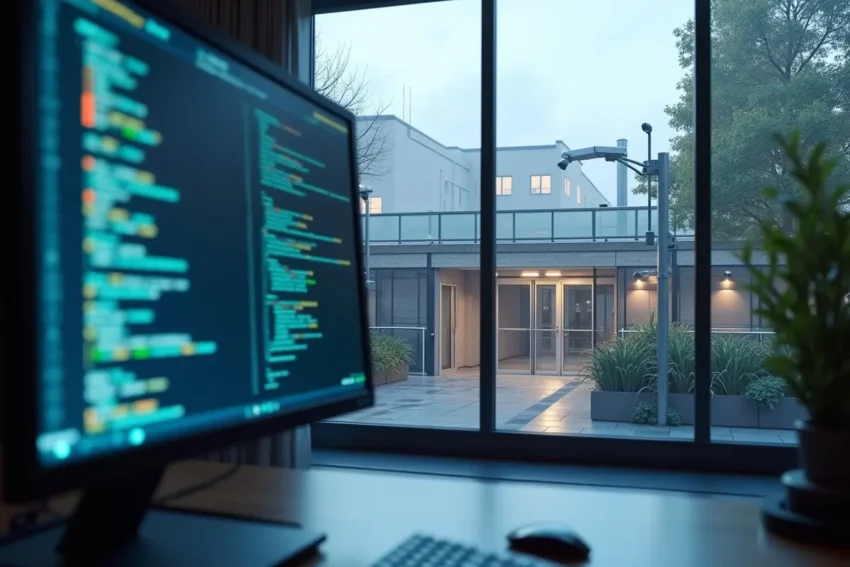Protecting Your Business From Growing Cyber and Physical Threats

Businesses face an increasing array of cyber and physical threats that can undermine their operations and reputation. As technology advances, so do the tactics employed by malicious actors seeking to exploit vulnerabilities. Companies must remain vigilant and proactive in protecting their assets against these dangers.
Unchecked risks can lead to significant financial losses, regulatory fines, and a tarnished image. An effective security strategy safeguards data and property and fosters a culture of awareness among employees. This article dives into strategies businesses can implement to enhance their security posture in both cyberspace and the physical environment.
Contents
Understanding Cyber Threats
The digital landscape is likely one of the most vulnerable areas for any business. Cyber threats come in various forms, including phishing attacks, ransomware, and malware deployments. Phishing remains a common tactic often used by attackers, tricking employees into revealing sensitive information by masquerading as trusted sources. It is estimated that about 60% of small and medium-sized businesses close within six months of falling victim to a cyber attack.
This statistic reflects the dire need for companies to bolster their cyber defenses. Key elements of effective cybersecurity include a robust firewall, anti-virus software, and regular updates to all systems. Educating employees about identifying suspicious emails and links is vital. Implementing policies that encourage reporting suspected phishing attempts can create an informed workforce poised to defend against these attacks. Regular security audits help identify vulnerabilities that may have been overlooked.
Addressing Physical Threats
While cyber threats dominate headlines, physical threats concurrent with digital dangers should not be disregarded. Physical security encompasses protecting a business’s assets, including employees, property, and sensitive data. Terms such as unauthorized access to restricted areas can lead to theft or data breaches. A recent survey noted that 70% of companies reported an increase in physical security incidents over the past few years.
To combat this, businesses must integrate comprehensive surveillance systems, access control mechanisms, and alarm systems to bolster their defenses. This is why enhancing corporate security measures is important to deter potential intruders and to reassure employees. Regular risk assessments can identify potential weaknesses in a company’s physical security, providing valuable data to help target improvements. Management must foster a culture of security awareness, encouraging employees to be vigilant and report any suspicious activity.
Policy Development
Developing clear security policies is crucial for both cyber and physical environments. A well-crafted policy articulates the security expectations for employees, guiding them on how to respond to security threats. Such policies should cover topics ranging from password management to data protection and emergency procedures in the event of a physical threat. Engaging employees in policy development can lead to a more comprehensive approach, as firsthand experience may reveal common pain points.
Communicating these policies regularly ensures that employees remain informed about existing and emerging threats. Periodic training sessions can further reinforce security practices, highlighting any updates to protocols. The implementation of a zero-tolerance policy toward security violations fosters an environment of accountability. Organizations that prioritize adherence to security protocols can significantly mitigate risk levels and promote a culture of safety.
Investing in Technology
While policies and education are critical, investing in the right technologies is equally important. Security technologies have evolved rapidly, and today, businesses have access to a myriad of solutions tailored to mitigate threats effectively. Advanced surveillance capabilities, such as video analytics and AI security systems, can alert management to potential intrusions in real-time.
Cybersecurity solutions, like secure cloud storage and encryption services, further protect sensitive data from unauthorized access. Implementing multi-factor authentication (MFA) adds a layer of security, making it more difficult for cybercriminals to gain entry. Conducting an assessment of existing systems can help identify security gaps and inform investment decisions. Knowing what tools are available allows businesses to stay ahead of threats, ensuring comprehensive security coverage.
Emergency Preparedness
One of the most critical aspects of security is being prepared for emergencies. Even with the most robust preventative measures, incidents can still occur. Having an emergency response plan is crucial for both cyber and physical threats. Such a plan should include clear protocols for communication, evacuation, and reporting incidents to authorities. Regular drills can familiarize employees with procedures, ensuring they know how to respond calmly and effectively.
The formation of a response team comprising various departments can facilitate coordination during an incident, enhancing operational responses. Integrating cybersecurity drills into these emergency protocols can raise awareness of digital vulnerabilities. Being well-prepared mitigates the impact of incidents and helps build employee confidence in the company’s security measures.
Regular Review and Adaptation
Security needs are not static. As threats evolve, businesses must regularly review and adjust their security measures accordingly. Scheduled audits, employee feedback, and staying informed about new trends in security threats are all part of an adaptable strategy. Businesses should incorporate lessons learned from previous security incidents to inform future decisions.
Formulating a flexible security strategy enables quick adjustments when new threats emerge. Engaging with industry experts can provide valuable insights and recommendations to strengthen security practices. Businesses that embrace ongoing adaptation will be better equipped to respond to emerging threats and maintain a secure environment.
The Role of Leadership in Security
Leadership plays a paramount role in establishing a security-conscious environment. When management prioritizes security, it sends a clear message to employees about its importance. Leaders are responsible for allocating resources to implement security measures, supporting policy development, and ensuring staff training occurs. Creating an organizational culture that promotes security awareness starts from the top, with leaders setting the tone for expectations.
Regularly communicating the importance of vigilance and responsiveness to incidents further solidifies this culture. Employees are more likely to take security seriously when they see their leaders actively engaging and emphasizing its significance. Leadership commitment is a linchpin in the quest to protect a business from today’s myriad threats. Cyber and physical threats are ever-present realities facing businesses today.
By understanding these risks and implementing proactive measures, companies can effectively protect themselves. Strategies that emphasize employee training, technology investment, and policy development aid in creating a robust security posture. Regular reviews and leadership commitment further strengthen these efforts, fostering an overarching culture of security awareness. Businesses that prioritize security are well-positioned to navigate the complexities of today’s threat landscape.



